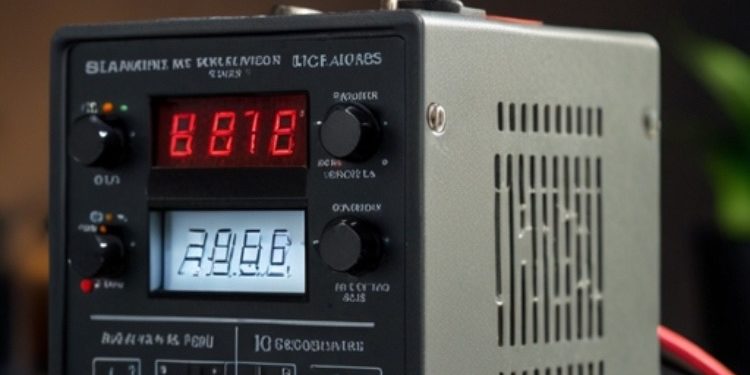A knowledge of the nature as well as the difference of functions that AC or Alternating Current and DC or Direct Current power supplies perform is important both for professionals and for amateurs in the field of electrical engineering. The objectives of this blog are to provide a well-rounded discussion of the basic features, benefits and uses of each type of power supply. As we will look into how such currents function and the settings where these systems would be applied, the readers should appreciate the reason why there are systems that operate in AC while others that employ DC designs. This information is very useful when one needs to engage in practical work or in theoretical work, since it places them at the center of one of the pillars of electrical engineering.For more in-depth information you should view from guide for ac vs dc power supply – Yoocas
What is a Power Supply?
Objective of a Power Supply.
The primal aim of a power supply is to aesthetically convert electrical energy from one form to another in order to satisfy the operation of a particular device or a system. With power supplies, there is reliability in providing a constant and regulated voltage and current to the electronic components improving the functionality of the devices in addition to their performance. Whether it is converting usable AC passed from the mains supply to a standard usable DC or vice versa, power supplies are core add-ons for efficient operational capabilities of different electronic and electrical appliances.View guide for ac vs dc power supply – Yoocas for More Details
Types of Power Supplies: AC and DC
Power supplies can broadly fall into two different subsets namely AC (Alternating Current) and DC (Direct Current). AC power supplies are normally used in distribution system because they are cost effective in long range distribution. In these power supplies, a sinusoidal waveform is obtained, which is ideal for domestic and industrial use. In versa, DC power supplies provide constant voltage or current supply where static voltage Is required, which is usually at most electronic devices, batteries and solar energy systems. All these types of power supply have their benefits and that is the reason why one is picked over the other depending on the need of the given application.
What Does a Power Supply Do
A power supply is defined as a device which receives electrical power, be it from the mains or a battery, and transforms it into a usable form. This process usually consists of several stages: transformation, rectification, filtering and stabilization. In the transformation step, the power supply converts the input voltage to the required level using transformer. The diodes or rectifier circuits then carry out the next position whereby AC current is changed to DC. After this filtering is done to improve the smoothness of the direct current by preventing or at least reducing the degree of any remaining alternating current fluctuations (ripple). In the end, regulation is done in order to prevent the change of output voltage arising from changes in the input voltage or load using, for example, a voltage regulator. These processes performed sequentially contribute to the steady and stable operating regime of the electric power supply meeting the requirements of consumers.
Investigating AC Power and Its Usages
What Is Alternating Current?
An Alternating Current (AC) is the current that is carried which fluctuates with time. It is unlike a Direct Current (DC) whose electron flow is constant in one direction. An AC on the other hand, constantly changes its direction whereby this can be defined by its appropriate frequency in hertz. Because of this alternating nature, Weber 1987 highlights that it is possible to be transmitted over long distances with n egligible loss. This therefore makes the energy generation and transmission over long distances utilizing the AC efficient.
Benefits of AC Power
The foremost benefit derived from the usage of AC power is in its bulk transmission over long distances charged with less energy mainly due to the fact that it can be stepped up and then stepped down to a safe level for consumption. Along the variables of the transformer loop, the AC supply chain incorporates several turns of the transformer to achieve this voltage reduction and therefore power loss over the lines is less. Furthermore, implementation of jack voltage regulators on AC systems is also easily done. Costs in the implementation of both AC and DC is that more complex systems wedeploy none in ordinary infrastructure and utility applications.
Specific requirements for AC power factors and supplies must be taken to ensure it benefits the user and the application.
Common AC Power Supplies Common AC power supplies consist of the electrical power grid, which provides energy to households and other commercial stations, on demand. Other instances, there are generators, which are built to produce AC electricity from rotating mechanical energy, and inverters that change DC power of batteries or solar panels into AC power usable by other household devices. This Annex describes some of the ordinary AC Supplies that are used in homes and industrial purposes making the system of electricity distribution more functional and adaptable.
Diving into DC Power and Its Uses. Understanding Direct Current. Direct current flows electric charges in one direction only, unlike alternating current which has a continuous switch over in the flow of energy. This unidirectional movement of electricity creates constant voltages making it a more dependable power source. Such applications are especially popular in low power, battery powered systems and any electronic applications in general. Some of the variables are how efficient energy is stored and the types of devices UWB accommodates, which are mostly electronic devices.
Advantages of DC Power
The first benefit of DC power is that a relatively robust energy storage and transmission system can be deployed at lower voltage levels. DC power systems can help exercise better control over a load since the energy is delivered with constant power. Also, such currents are particularly useful in electronic appliances, computers, and electric cars where high levels of calm, stable, and constant current and voltage are imperative. On-site DC powered systems such as solar panels and battery backup systems do not waste much energy even when used, so a compact and shorter setup is feasible.
Examples of DC Power Supplies
Typical DC power sources include batteries that offer mobile energy sources to power a matrix of items from remote controls to electric cars and bicycles. Another common source is the solar panel which its operation is the conversion of sunlight into electricity. Electricity produced by solar panels may be used to run devices and houses or stored in batteries for backup… also there are DC power adapters and chargers which allow such devices as laptops and smart phones to use AC power from the wall by converting it into a usable DC form. Also, DC power is commonly used in some industrial applications where exact control of electrical parameters is necessary. This indeed shows how useful direct current can be in both consumer and industrial uses.
The Difference Between AC and DC Power Supply
Key Characteristics of AC vs DC
Alternating Current (AC) and Direct Current (DC) have different properties making it efficient to employ them in different functions. The unique feature of AC is its reversal of direction at particular intervals. This property makes it possible to transport electricity from the power plants or stations to businesses and such related institutions over the electric grid. Opaque, however, is the fact that current flows in one direction at all times. This has the advantage of supplying power steadily, thus very useful in electrical devices and systems that require power variation in voltage and nature.
Applications: When to Use AC or DC
The applicable circumstances of AC and DC power supplies in certain instances vary depending on factors such distance of extending such power lines, efficiency concerns, and device stipulations. Power distribution in homes and business centers is mainly dependent on an alternating supply mainly due to the availability of transformers, which limit power wasting along long lines. However, DC is very much applicable in the noble task of balancing the current and voltage with the help of devices such as batteries, telecommunications equipment, and solar energy systems that inevitably work with batteries and DC powered gadgets.
Difficulties Associated with the Process of AC to DC Conversion
It is common to encounter the need to convert AC to DC because while AC is used throughout the electrical power grid, DC is predominantly used by electrical equipment. This conversion process poses a number of difficulties such as conversion inefficiencies in the power conversion equipment like rectifiers, harmonic losses, and the requirement to add a filter in order to produce a smooth DC output. Likewise, the architecture responsible for the conversion tends to be expensive because complex technologies are needed within it in order to keep the quality and reliability of power. However, despite these limitations, the progress in the development of the converter leads to enhancement of the ac to dc conversion process which helps reduce the cost of deployment in various applications.
Selecting the Appropriate Power Supply for the Correct Application
Criteria in Power Supply Selection
In the course of powering a load, several critical factors must be considered in order to achieve a proper focus and efficiency of the system in use. Aspects such as the type of load, its environmental condition, and safety requirements should be looked into in great detail. For example, it may be desirable to power the power supplies in an application with a low fringing effect for sensitive applications. Additionally, the energy efficiency and the design should be balanced with the total cost of ownership including the purchase, support, and operational cost. The attributes of the power source should not be ignored as they affect the downtimes’ economic implications and the effective life span of the system.
Assessing the Comparative Efficiency of AC and DC Power Supply
The design and the operating environment determine the efficiency of both AC and DC power supplies. Most AC power supplies are efficient over a long geographical area and can be easily transformed to different voltage levels through the use of transformers. This ability improves transmission efficiency making them long distance as well. On the other hand, an AC power system experiences losses from reactance in the electric circuitry. On the other hand, a DC power supply is more efficient in applications requiring precision as in the case of micro-electronics and LED lighting since the power does not require few conversion stages hence is in a direct form. In the end, it is often the application and load parameters which will determine which power supply will be the most power efficient.
Impact of Voltage Requirements
An application’s voltage requirements are crucial in selecting the appropriate power supply unit. Systems that operate at high voltage tend to decrease the amount of current that flows through transmission lines thus decreasing the amount of power losses due to heat. This is especially advantageous in sizeable AC distribution networks where there are step-up and step-down transformers. Low voltage DC systems on the other hand are useful in circuits and automotive systems which require precision and safety. It is obligatory to provide the rated load voltage, because such accomplishment contributes to both good functioning and reliability and safety of the structure as well as the compliance with the existing rules and regulations.











































































